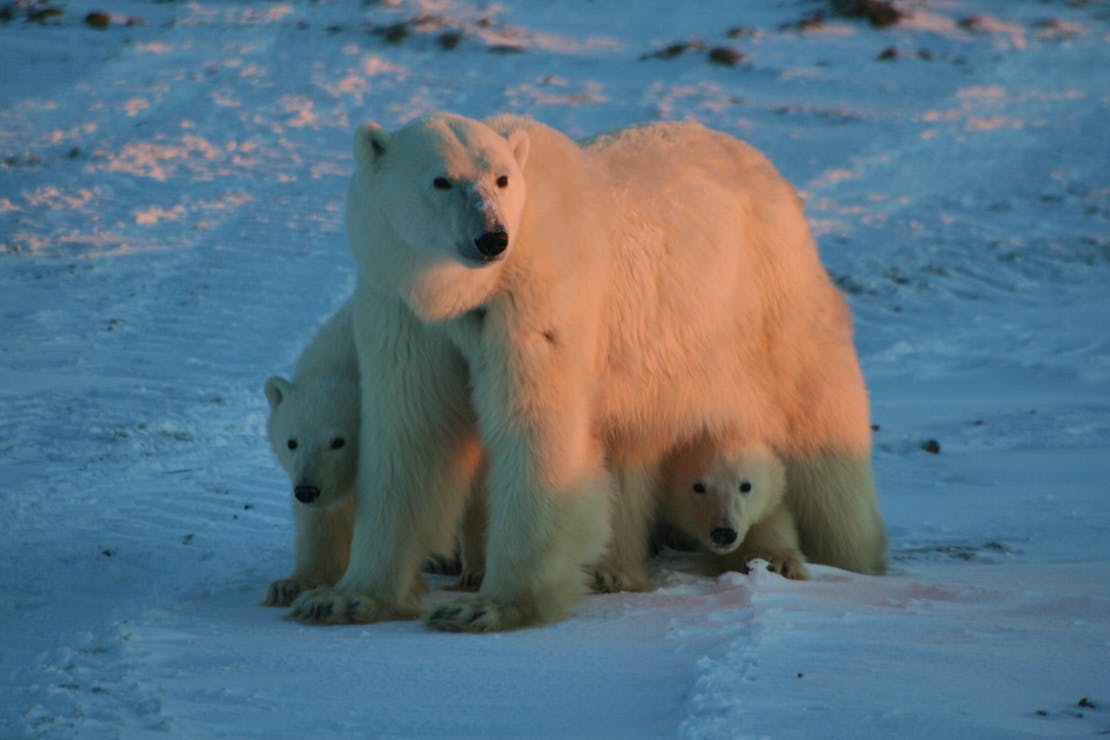It’s not uncommon for a polar bear to wander through town in northern Alaska. Seeing a polar bear can be an exciting experience, but you don’t necessarily want polar bears nearby when a school bus pulls up or when you are trying to leave your house. To ensure village safety, we have specially trained residents that make up our village Polar Bear Patrols—who haze polar bears. Hazing is a series of nonlethal steps to encourage the bears to move away from areas where people walk and live. These highly trained local residents work for the North Slope Borough Department of Wildlife Management in six communities across northern Alaska. Becoming a patroller requires specialized knowledge about bear behavior and use of deterrents, and training is provided by the North Slope Borough and U.S. Fish and Wildlife Service (FWS).
When a member of a Polar Bear Patrol takes action, they record what they did and the bear's reaction to it, along with the bear's age, sex and body condition. Documentation is important so wildlife managers and others can learn more about how to safely deter bears. Generally, patrollers use the least amount of force necessary to get the bear to move away. Interactions can be as simple as the patrol driving up in a vehicle to scare the bear away. Other times, a bear might not react and an additional deterrent, such as a spotlight or a horn, will make the bear move away. In some scenarios, it may take the use of cracker shells or bean bags to encourage a stubborn bear to leave the area.
FWS collects data on these interactions every year to gain a better understanding of what deterrence methods are effective. This data allows scientists to see if bear behavior is changing over time. For example, if bears become too familiar with people and cars, more forceful methods may be required to deter the bears.
For the first half of 2020, I worked for the U.S. Fish and Wildlife Service as a student intern from the Alaska Native Science and Engineering Program at the University of Alaska, Anchorage. My primary duty was to transcribe the data from the polar bear patrols taking handwritten interaction reports and entering them into a larger database. Additionally, I helped review reports on sea otters, to monitor the status of their population regarding the Endangered Species Act. I also attended larger marine mammal staff meetings and heard about different ways agencies and communities work alongside FWS to conduct research and protect wildlife.
I recently finished my bachelor's degree in biological sciences, and until my internship with FWS, made possible by Defenders of Wildlife, I hadn’t worked with a large database system. I am grateful for the experience I gained during my internship.
And, fantastically, my internship led to a permanent position! FWS has hired me to work as a biologist at the Togiak National Wildlife Refuge in Dillingham, Alaska, where I will help monitor the caribou population migrating through western Alaska. It seems like not too long ago I graduated from high school in Nome Alaska. With the support of organizations like Defenders of Wildlife, the Alaska Native Science and Engineering Program and FWS, I found a job working to study and protect the wildlife in my home state.








